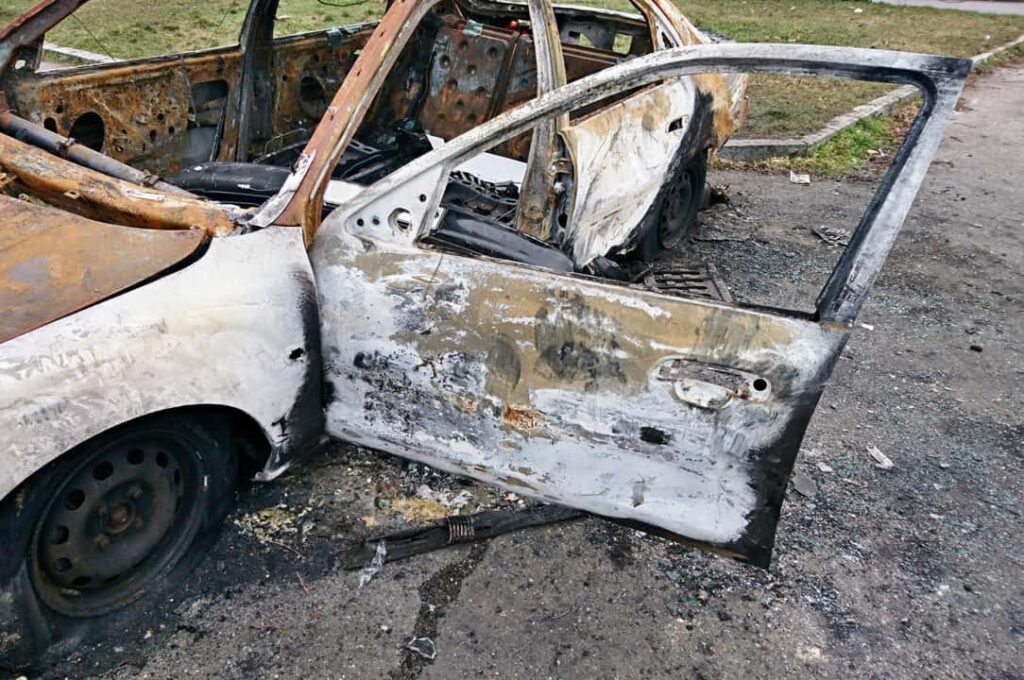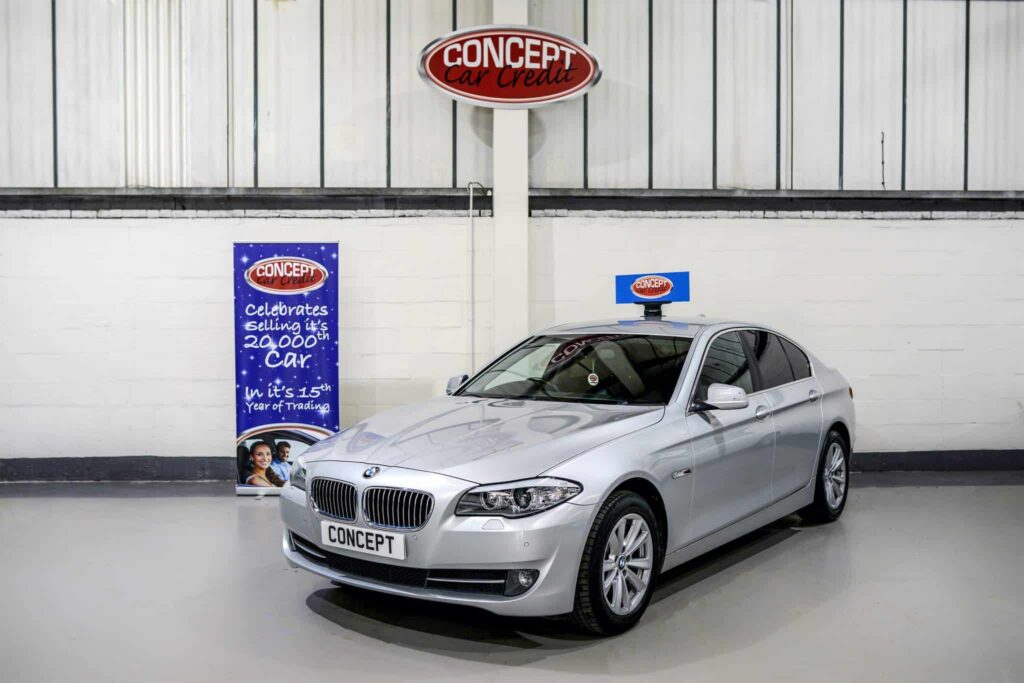29 October 2018 Concept Car
In the news, you may recently have seen reports about Buy Here Pay Here making a comeback. But has BHPH ever really left the frontpages? For as long as it has been around, it has been a point of contention.
The media have investigated it.
Consumer rights activists have criticised it.
And many thousands of households have tried it – for better or worse.
Although sceptics have lambasted the industry for taking advantage of the hopeless and poor, proponents of Buy Here Pay Here have defended it for putting them behind the wheel again.
In this special report, we take a closer look at BHPH. We’ll show you how the industry grew over time and where it is at today. We’ll explain the dangers and outline the benefits. And we’ll help you set up a strategy to actually make BHPH work.
Although, strictly speaking, we’re not a Buy Here Pay Here dealer, our concept works very similarly: At Concept Car Credit, we offer integrated deals, which combine financing and car buying at extremely favourable rates. If you’re interested, take a look at our online showroom and apply for finance today.
The astounding return of an old concept
What is Buy Here, Pay Here
Let’s take a look at an example
Media Outrage: How bad is BHPH really?
Strategies: The real dangers of Buy Here Pay Here
Alternatives to Buy Here Pay Here
But first, let’s take a look at one of the car industry’s most shocking and remarkable news stories: The amazing return of Buy Here Pay Here over the last few months!
After all, by about 2015, BHPH seemed to be on its way out. Over the last four years, at least in the USA; it had lost over 30% of its market share. It was under heavy competition from conventional banks. And the bad press just wouldn’t stop. To many experts, it appeared as though the concept had finally run its course.
In truth, Buy Here Pay Here was alive and kicking. In fact, it was so in demand that regular banks wanted a piece of the pie, too. The reason was the great recession, which hit Europe and the USA hard. Many people simply could no longer afford car credit at the usual rates. And so, financial institutions groomed the subprime market and offered car finance to the financially troubled as well.
Giant banks were in a position to offer more favourable rates than smaller BHPH lenders. And so, they gradually took over.

It would therefore be wrong to speak about a crisis. The basic idea of BHPH – offering car finance to those with a poor credit rating – was more relevant than ever. This makes perfect sense if we consider the history of BHPH and how it rose like a phoenix from the ashes of another recession: The United Stares savings and loan crisis in the 1980s.
At the time, unemployment was rampant and banks were weary of extending credit to anyone with high risks of defaulting. This was horrible news for car dealerships. Since potential buyers were reliant on bank loans to finance their car, many deals fell through.
And so, dealers understandably felt that they had to take things into their own hands. They founded their own finance companies, which could approve loans and provide credit to buyers.
This way, they gained in more than one way: On the one hand, they were able to sell cars again. On the other hand, they made money by also selling finance. And consumers had access to affordable vehicles once more.
Car magazine Autodealer Monthly describes the transformation of the industry from a niche to an influential factor as passing through three distinct phases:
In a first stage, BHPH lots were mosty tiny gravel lots, the manager’s office a refurbished trailer or renovated gas station. These were small, low risk operations without any glamour whatsoever.
The next stage would mark the decisive step which transformed the industry into what it is today: A serious competition to regular dealerships and a perfectly modern business. This is the phase we described above in the 80s, when a faltering economy turned BHPH lots into beacons of hope.
Where will Buy Here Pay Here go from here? It looks as though the next step will see dealerships become even more professional. Innovations will include more standardised application- and acceptance procedures, easy to use apps for processing payments and researching recent offers as well as digital showrooms. Technology will penetrate every corner of the industry. Ultimately, this should make BHPH a lot more reputable and, importantly, transparent.
In the end, everyone wins.
But is that really the case? Unfortunately, the potential for profitmongering was simply too high. And so, some of the newly founded finance companies would soon abuse their power.
Some of the typical predatory techniques applied by the black sheep include:
It is easy to see, therefore, why so many have heavily criticised BHPH dealers for their behaviour.
And yet, partially due to the increased competition, the industry has pulled itself together and given itself a facelift. Today, it has reconquered more than 11% of the car finance market – an impressive achievement!

Maybe now’s a good time to explain something … what is Buy Here Pay Here, exactly?
With Buy Here, Pay Here, the dealer sells you not just a car, but the corresponding finance as well. They may even trade in your old vehicle to make the transaction complete.
This means that BHPH describes a one stop concept. You will no longer need to apply for a loan with an outside finance company. You can take care of everything directly at the dealer.
Most dealers will try to sell you a loan. To do this, they will usually go through the conventional route and provide that credit through a bank. Their bigger market power allows them to get better deals than you would get on your own. And they are also quite often able to convince a bank to take a slightly higher risk if your credit score is not perfect.
This, however, is just one form of ‘in-house financing’. It is not Buy Here Pay Here.
In its purest form, the BHPH dealer has to borrow the money out of her own resources. The result may be the same – you’ll still get everything you need at the dealer – but the implications are slightly different.
Precisely because the original concept behind Buy Here Pay Here was to finance the underfinanced, BHPH dealers need to ask for higher interest rates than conventional dealers.
Since they are also smaller than big banks, they are more volatile to defaults. All of this means that BHPH finance can be described as high risk loans for high risk customers. They allow you to get a loan even if your credit score is low. On the flipside, they need to be more expensive for the very same reasons.
Software manufacturer Constellation writes:
“Various sources list the average interest rate at BHPH dealers slightly above or below 20% APR. Compare this with the average interest rate for all Deep Subprime (FICA score below 549) loans of 17.9% and Subprime (FICO scores of 550 – 619) at 14.4%. Because BHPH dealers lend their own money to people who generally can obtain any other financing, 20% seems fairly reasonable. Many dealers charge far less than 20%. The average at industry giant America’s Car Mart through April of last year was 14.4%.”
It also explains why it is sometimes claimed that Buy Here Pay Here dealers are more in the finance business than the car selling business: Their main goal is not to offer you the greatest and most beautiful cars in the world, but to offer you a car at all.
Today, thankfully, these two goals are, however, coming closer together.
Often enough, BHPH dealers are criticised for taking too many liberties in their deals. On the other hand, we can also give a more positive spin to that statement. Precisely because they are banks and do not need to adhere to the same limitations, BHPH dealerships can be more lenient when it comes to accepting customers with less than perfect credit ratings.
Especially after the last financial crisis, banks have taken a lot of flack for taking too much risk and gambling away their customer’s precious savings. To prevent them from once again going crazy in the subprime domain, most credits are highly regulated. Meaning that even if a bank wanted to provide credit more easily to those in need, they would very often not be allowed to.
This naturally presents a huge problem for those with a weak credit history.
BHPH is not the Wild West. Just like any other industry, it needs to conform to certain standards and has to remain within the limits of the law. However, it has more leeway to take on board applicants who would be a no go with a conventional bank.
Let’s say you want to buy a car.
Your credit score is classified as ‘very poor’ by all three major credit rating agencies in the UK.
You currently only have a badly paid part time job.
You do not own a house of your own.
Your bank account is depleted and your have very little items that could work as collateral.
There is no one to co-sign the loan for you.
If there were only traditional banks, you might as well just stay at home. Applying under these circumstances simply doesn’t make any sense whatsoever. Banks may even not be allowed to extend credit to you.
With a Buy Here Pay Here dealer, meanwhile, the situation looks a bit different. Although the risk of a default remains very high, BHPH dealers can nonetheless offer you a deal which can work for both sides.
As we’ve mentioned, high interest rates are one part of the approach. These allow the dealership to create a cushion for themselves should things go wrong.
The most important aspect of Buy Here Pay Here, however, is the idea that the interest rate should not be your main concern. Rather, monthly instalments are.
Simply put, the main problem with most loans is not that customers can not afford them. The problem is that the standard monthly repayments exceed their income. There is a subtle, but vital difference between the two, because if you can create a scenario, where monthly payments are low and the loan is spread out over a longer timeline, even financially weak households can suddenly return to the negotiation table.
There are limits to this concept, as we’ll explain later. But for now, it should be enough to say that BHPH loans work by changing the structure of your payment plan. That’s not black magic or predatory behaviour, but actually quite a smart concept.
Last, but not least, Buy Here Pay Here hinges on a preferences for second hand vehicles. Although it is strictly speaking possible to also finance a new car through BHPH, this is a rare feat in practise.
The main reason for this is depreciation.
Depreciation describes the gradual loss in a car’s value over time. As a vehicle grows older, its parts wear down, its entire construction looses some of its robustity and the paint begins to wear off.
It is entirely understandable, therefore, that a car should be worth quite a bit more at the moment of purchase than a few years later.
Depreciation, however, does not follow a linear curve. Instead, it drops abruptly within the first three years of buying the car, then takes a slightly less dramatic slump over the next few years, before all but levelling out after ten years.
This means that your car loses most of its value over the first few months, although it is still as good as new. It may actually be better than new, since you’ve now driven it a bit and it won’t feel quite as ‘rusty’ anymore.
To be able to give you a really good deal, BHPH relies on second hand cars. Depreciation has already come off, so you no longer have to bear its cost. This is an essential benefit if you’re strapped for cash.

Before analysing the advantages and disadvantages of Buy Here Pay Here schemes, let’s first take a look at some of the most common misconceptions and misrepresentations that you’ll find in the media.
This seems important, as many media platforms are still merciless in their criticism of this particular financing model. American Youtube channel The Young Turks, for example, screened a special, in which they highlighted the bad business practises displayed by some BHPH lots.
Most of the evidence from the Young Turks commentary was based on an article in the LA Times, which described how these lots would sell you a very old car at predatory interest rates and then, should you have to default on that loan, repossess that vehicle and resell it to another customer.
According to Brian Unger of The Young Turks, the article is ‘Pullitzer material’. Not only is that a slight exaggeration in terms of its importance. It is also misleading in so far as many of the problems of the industry have long been recognised and taken care of.
As Constellation point out in their previously mentioned blog feature:
Even if not all of the myths perpetuated by its critics are correct, Buy Here Pay Here is still highly controversial. After many years, in which the opponents had the upper hand, the BHPH industry has increasingly started to defend itself.
The main argument that many salesmen have made is that BHPH can not be evaluated with the criteria applied to the regular finance market. After all, people turn towards these loans precisely because the regular finance market isn’t willing to help them. It seems somewhat superflous to screen customers at a BHPH lot for their credit rating, because it is bound to be bad. And in many cases, debt is not a one-off problem, but a continuous state.
So, naturally, most dealers in this segment will have a more defensive stance towards loans. They may be more willing to extend credit, but they are also naturally more assertive when it comes to collecting their money. This, for example, explains the concept, occasionally albeit certainly not always found at BHOH lots, of requiring a payment for every paycheck.
On website Auto Influence, a former BHPH salesman offers his personal and honest point of view on the approach. The following quote is taken from a debate on website reddit:
“I have a different view of these places but that’s because I work in one. (…) People who cry that we are ripping you off forget that we are working with the riskiest portion of the population, people who make poor financial decisions. We are not like other agencies that get paid by the banks or other financial institutions. Our money comes from you. If you stop paying, we have to make the effort of tracking you down and repossessing your car. (…) We are not like a bank that can just write it off like no big deal. Every loss is a big deal.”
Certainly, at least in the UK, the description of BHPH customers as only those ‘who make poor financial decisions’ is too one-sided. But he has a point: BHPH dealers are vulnerable. And so they need to act more strongly towards the dangers threatening their own existence.
Perhaps the most convincing example of a ‘good BHPH dealer’ is Rick Dyer, an American self-made man, who has produced a series of lofi youtube videos on the topic of Buy Here Pay Here. Most of these are aimed at setting up your own car lot and the troubles and obstacles associated with that.
Others deal quite openly with the criticism levelled against the trade. Dyer’s philosophy seems to be that you don’t need to ask for outrageous interest rates and car prices to turn a healthy profit. If you’re doing it right, he says, both sides have something to gain from these deals, which is in perfect accordance with the original motivations for the industry.
Even though many of the claims of opponents may therefore no longer or at least not universally apply, there are some dangers when considering BHPH as a car finance option. In the following paragraphs, we’ll take a look at them in turn and give you some advice on a suitable strategy to make Buy Here Pay Here work after all.
The following scenario must surely be a nightmare for anyone with bad credit:
After many rejected applications with traditional banks, you have finally found a Buy Here Pay Here dealer willing to grant you a loan. You have negotiated a reasonable interest rate and a payment schedule that works for you. You’ve been pre-approved for a loan with the dealership and you’ve signed the paperwork. Now you’re taken to their showroom where you can pick the car that you like …
… only to find that all of the vehicles on sale are absolutely horrible, old and in a poor state. How you wish you could take back your signature now!
Whether or not this actually happened or how often it happened, is surely open to debate. One thing’s for sure, though:
BHPH lots do not have the same quality car selection as the average car dealer. Part of the reason for this is that they also trade in the used cars of buyers with poor credit and many of these will be, as you’d expect, worn down pretty badly.
Another is that better cars cost more money. So most customers at a BHPH dealership, the reasoning goes, simply couldn’t afford anything better.
We don’t agree with this and we also feel you should always have the choice to back down from your contract if there is absolutely no decent car available to you. Which means you need to read the fine print of your contract very carefully. You could end up regretting it if you didn’t.

Even if the selection looks fine, this does not necessarily mean that the cars are all that great. In fact, there is a real danger that you may be in need of a repair soon. BHPH lots may not always offer an affordable warranty on their cars. So if push comes to show, you may find yourself without a working automobile.
As we mentioned, many dealers these days are far more understanding and supportive if that should happen. But they are no charitable institutions either. A bad car is going to cost you badly, as great as the dealer may be.
This makes it imperative that you pay particularly close attention to details when buying a vehicle off a BHPH dealer. We’ve written quite extensively on this blog about the steps you can take to protect yourself from an expensive mistake. See more in our guide to car body repairs, an article on when to replace your old car, and of course our invaluable car maintenance checklist.
If a test drive is not possible and you don’t want to insists, at least take a well-versed friend or family member with you to roughly assess the state the vehicle is in.
Paying £15,000 for a car if it is only worth £10,000 doesn’t sound like a particularly good deal, does it? Yet, that’s exactly what many cash-strapped drivers are doing.
As roadloans.com points out, if you borrow money from a bank, the loan is going to be closely tied to the actual value of the car. Obviously, the interest you’ll pay will add to that. But they will never allow you to borrow a lot more than what the car is actually worth.
Obviously, if the bank is the lender, they’ll mainly do this to protect themselves. But it also makes sense for you to at least put in place some form of restriction on how much you’re willing to go beyond the usual market costs of a car loan. This is especially true for an older vehicle, where the risk of the car breaking down completely is rampant.
The problem is that some Buy Here Pay Here lots are not quite as concerned with this as they perhaps should be. As long as they can put you in a car, they’ll offer you any interest rate and any loan term imaginable. Which means you could be paying a dizzying amount of interest and still be paying off your loan in ten years time.
As much as you may need a vehicle – don’t let it come to this.
All of the above are some of the reasons why you might be wary of buying a car at a BHPH lot. But the LA Times article, of course, went even deeper. Essentially, the newspaper claimed that these dealers were playing evil tricks on their customer.
One particularly striking example: A customer had to default on his loan. The manager called him, claiming that he should take the car to the lot and they’d work out a new finance plan. The customer did drive by. But after he’d parked his car, the dealer was suddenly no longer interested in talking to him. Instead, he repossessed the vehicle and sent the customer home – walking.
It is hard to believe that this sort of deceitful behaviour is still happening. Certainly, thanks to strict quality improvement policies, the BHPH industry has tried to distance itself from them. But if they are still happening, they are certainly not the exclusive domain of Buy Here Pay Here companies.
Which only goes to show you that you need to be alert at all times and with any kind of dealer.
It should have become clear by now that Buy Here Pay Here can be a blessing and a curse. In the end, everything hinges on the dealer selling your the car finance. If they are genuinely interested in getting you behind the wheel again, then BHPH can be a godsend. If they’re out to abuse you – well, then it helps to be prepared.
At the same time, it makes sense to take a look at the alternatives.
For one, the most obvious approach is to improve your credit rating. We realise this is easier said than done. But the important thing is that you can do it! Small things can go a long way here – from cancelling all unnecessary credit cards and paying off small, but longstanding amounts of debt to rebuilding your credit by setting up direct debit orders for all your recurring charges.
If you do plan to go ahead with getting a car at a BHPH dealership, make sure to ask them whether or not they’re reporting your payments. If they are, they’ll go towards repairing your rating.
Buy Here Pay Here can not get you the car of your dreams. But then again, even a regular car finance deal won’t do that, either. When looking for a car, it helps to be practical and remain modest. What is it you really need? How would you define your basic requirements? What are some of the extras you can do without? With a little bit of research, you can find plenty of great cars that meet your criteria.

We’ve mentioned regular financing by a dealer before. Now’s a good time to take a second look at it. Most dealers, after all, are perfectly capable of providing you with credit and they tend to be a lot more customer oriented and flexible about it than most banks.
The way dealers do this is that they shop around for the best credit at different banks. Since they’re experienced in this and may apply for several loans each month, they are usually able to get far better prices than you would.
If you can find a dealer who can get you a good price, it can even be worth your while to hold off on the purchase a little to improve your rating and your chances of a loan. As much as Buy Here Pay Here has changed – most alternatives are still superior to it by far.
29 October 2018 Concept Car